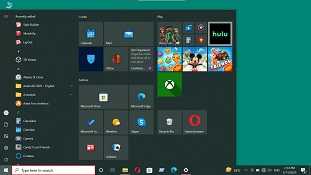What is Graphical User Interface (GUI)?
A system of interactive (and customizable) components designed for computer software is known as a GUI or graphical user interface. A GUI presents information and action-representative items for the user to interact with. When the user interacts with the items, a change in their colour, size, or visibility can be observed.
In 1981, Alan Kay, Douglas Engelbart, and a number of other researchers created the first version of the GUI. Later, on January 19, 1983, Apple released the Lisa computer, which featured a GUI.
Operating systems like Windows, MacOS, Chrome OS and Linux Ubuntu are all examples of graphical user interfaces. Operating systems that offer GUI don’t necessarily require a pointing peripheral device, such as a mouse (although the mouse does make it much simpler and easier to use), a keyboard is more than capable of doing everything that a mouse can, however it would require you to learn a shortcuts (such as Ctrl+C for copy or Ctrl+T for a new tab on a web browser)
Advantages
In comparison to a command-line interface, a GUI is regarded to be more user-friendly. Due to the fact that instructions do not need to be learned, GUI operating systems are simpler to learn and operate than command-line operating systems (CUI), such as Unix. Furthermore, users aren’t required to be familiar with any programming languages.
GUI operating systems now account for the majority of the market due to their simplicity of use and more mainstream appearance.
Working
A GUI illustrates to the user how to carry out tasks via windows, icons, menus, and buttons. You can accomplish this with a touch screen, keyboard, or mouse. For instance, you can use your mouse to point and click to open a file on your screen.
On the back end, the command is interpreted and carried out by the GUI. A single or double click on an icon can be used to differentiate between different commands. A single click instructs the system to highlight the icon, whereas a double click instructs it to start a software or open a folder that the icon represents. The GUI makes it easier for data to be transferred from the user to the device.
User Interface
A user interface is used to help a user interact with a device. The user enters data, after which the output is displayed.
Thus, command-line interfaces and graphical user interfaces are actually subtypes of UI. Despite using distinct inputs, they both are essentially used to interact with a gadget.

